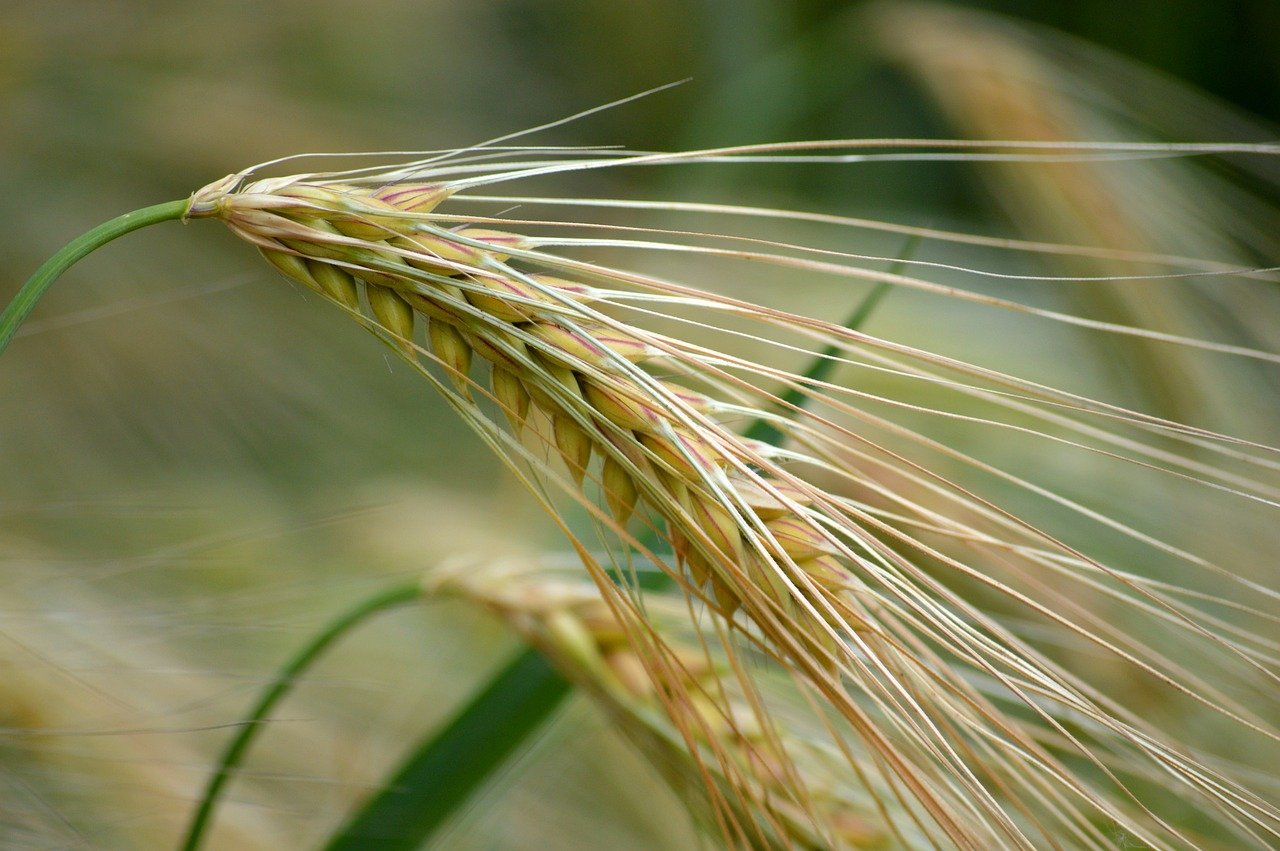Get ready to revolutionize your baking game with grain-free options! In this article, we’ll explore the fascinating world of grain-free baking, specifically focusing on Paleo and Keto options. Whether you’re following a specific dietary protocol or simply looking to experiment with new flavors and textures, grain-free baking offers a plethora of delicious possibilities. From mouthwatering breads to delectable desserts, we’ll guide you through the basics and help you master the art of grain-free baking. Get ready to tantalize your taste buds and impress your friends and family with these healthy and flavorful creations. Let’s get started!

Benefits of Grain-Free Baking
Improved Digestion
Grain-free baking offers numerous benefits for your digestion. By eliminating grains from your diet, you reduce the intake of gluten, which can be difficult for some people to digest. This can alleviate digestive issues such as bloating, gas, and stomach discomfort. Additionally, grain-free options are often higher in fiber, which promotes healthy digestion and helps prevent constipation.
Weight Management
If you’re looking to manage your weight or even shed a few pounds, grain-free baking can be a great option. Since grain-based flours are typically high in carbohydrates, they can contribute to weight gain. By using alternative flours in your baking, such as almond flour or coconut flour, you reduce carbohydrate intake and can better manage your calorie consumption. Grain-free recipes can still be delicious and satisfying while helping you reach your weight management goals.
Blood Sugar Regulation
For individuals with diabetes or those looking to stabilize their blood sugar levels, grain-free baking offers a valuable solution. Traditional flour is high in carbohydrates, which can cause blood sugar levels to spike. By using low-carb flours in grain-free baking, such as almond flour or flaxseed meal, you can enjoy delicious treats without the negative impact on your blood sugar. This can lead to better overall blood sugar regulation and improved long-term health.
Reduced Inflammation
Grains, particularly those containing gluten, can be inflammatory for some individuals. Inflammation in the body has been linked to various health issues, including arthritis, chronic pain, and autoimmune diseases. By adopting a grain-free baking approach, you can reduce your consumption of potentially inflammatory ingredients and improve your overall well-being. Alternative flours like coconut flour or arrowroot flour offer a nutritious and inflammation-reducing alternative for baking.
Paleo Baking
Overview of the Paleo Diet
The Paleo diet, also known as the caveman diet, focuses on consuming foods that were available to our ancestors during the Paleolithic era. This includes lean meats, fish, fruits, vegetables, nuts, and seeds. The diet excludes grains, legumes, dairy products, and processed foods. Paleo baking adheres to these principles and aims to create delicious baked goods without the use of grains or refined sugars.
Substitutes for Grain-Based Flours
When it comes to Paleo baking, there are several alternatives to traditional grain-based flours. Almond flour and coconut flour are popular choices due to their mild flavors and versatility. These flours provide a nutrient-rich base for various baked goods. Additionally, tapioca flour/starch, arrowroot flour/starch, and cassava flour are commonly used as binders and thickeners in Paleo baking.
Key Ingredients in Paleo Baking
Paleo baking relies on wholesome ingredients to create delicious and nutritious treats. Common ingredients include eggs, coconut oil, honey or maple syrup as natural sweeteners, and almond or coconut milk as dairy-free alternatives. These ingredients not only add flavor but also provide important nutrients and health benefits.
Paleo Baking Tips and Techniques
To achieve the best results in Paleo baking, there are a few tips and techniques to keep in mind. Firstly, it’s important to properly measure the ingredients, as precise measurements can greatly affect the outcome of the baked goods. Additionally, understanding the role of binding agents, such as eggs or ground flaxseeds mixed with water, is crucial to achieve the desired texture. Lastly, experimenting with different Paleo-friendly sweeteners and flavors can help you create unique and delicious treats.

Keto Baking
Understanding the Ketogenic Diet
The ketogenic diet, or keto diet, is a low-carb, high-fat diet that aims to put your body into a metabolic state called ketosis. By drastically reducing carbohydrate intake and increasing fat consumption, the body transitions from using glucose as its primary fuel source to using ketones produced from fat. Keto baking aligns with this diet by focusing on low-carb ingredients and healthy fats.
Low-Carb Flours for Baking
When it comes to keto baking, the choice of flour is crucial. Traditional grain-based flours are high in carbs and therefore not suitable for the keto diet. Instead, low-carb flours such as almond flour, coconut flour, and flaxseed meal can be used as excellent substitutes. These flours are higher in healthy fats and fiber, making them ideal for maintaining ketosis while enjoying baked goods.
Sugar Substitutes for Keto Baking
One of the main challenges in keto baking is finding suitable alternatives to traditional sugar. Fortunately, there are several keto-friendly sweeteners available that won’t spike your blood sugar levels. Stevia, erythritol, and monk fruit sweetener are popular options as they provide sweetness without adding carbs. Experimenting with different sweeteners can help you find the perfect balance of sweetness in your keto baked goods.
Keto Baking Tips and Tricks
To achieve successful results in keto baking, there are a few tips and tricks to consider. Firstly, it’s essential to understand the importance of ratios and measurements, as the proportions of fat, protein, and carbohydrates need to be carefully balanced. Additionally, adding moisture to keto baked goods can be crucial, as low-carb flours can be denser and drier compared to their grain-based counterparts. Lastly, experimenting with different fats and flavors can help you create delicious and satisfying keto treats.
Grain-Free Baking Recipes
Grain-Free Chocolate Chip Cookies
Indulge in a classic treat without the grains. These grain-free chocolate chip cookies are made with almond flour, coconut oil, and natural sweeteners such as honey or maple syrup. They are gluten-free, dairy-free, and oh so delicious.
Paleo Banana Bread
Satisfy your cravings with this moist and flavorful paleo banana bread. Made with ripe bananas, almond flour, and a touch of cinnamon, this grain-free version of a classic is perfect for breakfast or as a snack.
Keto Almond Flour Pancakes
Start your day right with these fluffy and filling keto almond flour pancakes. With just a few simple ingredients like almond flour, eggs, and a touch of vanilla extract, you can enjoy a low-carb and satisfying breakfast.
Grain-Free Lemon Bars
These tangy and refreshing grain-free lemon bars are sure to brighten up your day. Made with a flavorful almond flour crust and a zesty lemon filling, they are the perfect treat for any occasion.
Paleo Pumpkin Muffins
Embrace the flavors of fall with these moist and aromatic paleo pumpkin muffins. Made with almond flour, pumpkin puree, and warming spices, they are a healthy and delicious way to enjoy the season.
Keto Blueberry Scones
Indulge in these keto blueberry scones for a decadent breakfast or afternoon treat. Made with almond flour, fresh blueberries, and a hint of lemon zest, these scones are both delicious and keto-friendly.
Grain-Free Pizza Crust
Satisfy your pizza cravings without the grains with this grain-free pizza crust. Made with a combination of almond flour and tapioca flour, it provides a chewy and flavorful base for all your favorite toppings.
Paleo Cinnamon Rolls
Enjoy the comforting flavors of cinnamon rolls without the grains. These paleo cinnamon rolls are made with a grain-free dough, filled with a cinnamon-sugar mixture, and topped with a delicious dairy-free glaze.
Keto Cheesecake
Indulge in a creamy and decadent keto cheesecake. Made with a rich almond flour crust and a smooth cream cheese filling sweetened with keto-friendly sweeteners, this cheesecake is the perfect guilt-free dessert.
Grain-Free Bread
Say goodbye to store-bought bread and enjoy this homemade grain-free bread. Made with a combination of almond flour, coconut flour, and eggs, it’s nutritious, delicious, and perfect for sandwiches or toast.

Tips for Successful Grain-Free Baking
Measurements and Ratios
Grain-free baking often requires precise measurements and ratios to ensure the best results. Invest in a kitchen scale to accurately measure ingredients by weight, as different flours have varying densities. Understanding the correct ratios of wet to dry ingredients is essential for achieving the desired texture and structure in your baked goods.
Understanding Binding Agents
In grain-free baking, binding agents play a crucial role in replacing the gluten found in wheat flour. Eggs, as well as substitutes like ground flaxseeds mixed with water, act as binders and help give structure to your baked goods. Experiment with different binding agents to find the ones that work best for you and your dietary preferences.
Texture Enhancers
Achieving the desired texture in grain-free baked goods can sometimes be challenging. Adding ingredients such as xanthan gum or guar gum can help mimic the stretch and elasticity of gluten, resulting in a more satisfying texture. It’s important to follow recommended guidelines and experiment with small amounts to avoid overpowering the flavor or texture.
Baking Time and Temperature
Grain-free baked goods may require slightly different baking times and temperatures compared to their grain-based counterparts. Keep a close eye on your baked goods and use a toothpick or cake tester to check for doneness. Adjusting the baking time and temperature based on your oven’s unique characteristics can help you achieve perfectly baked grain-free treats.
Storing Grain-Free Baked Goods
Proper storage is essential for maintaining the freshness and quality of your grain-free baked goods. Most grain-free treats benefit from being stored in an airtight container at room temperature for a short period. However, some delicate items may require refrigeration. Pay attention to specific instructions for each recipe and enjoy your treats within their recommended storage timeframe.
Common Challenges in Grain-Free Baking
Dry and Crumbly Texture
One common challenge in grain-free baking is achieving the desired texture. Grain-free flours have different moisture-absorbing properties compared to traditional flours, which can result in a drier and crumbly texture. To combat this, adding additional moisture through ingredients like eggs, applesauce, or coconut oil can help improve the texture of your baked goods.
Lack of Structural Support
Without gluten, which provides structure and elasticity, grain-free baked goods can sometimes lack the necessary support. To address this challenge, adding binding agents like xanthan gum or increasing the proportion of eggs in the recipe can help provide the needed structure. Experimenting with different techniques can help you find the perfect balance for your desired outcome.
Difficulty Achieving Fluffy Texture
Fluffy texture is a sought-after quality in many baked goods. Achieving this without the use of grains can be challenging. Choosing the right combination of flours, like almond flour with a lighter flour such as arrowroot starch, can help create a lighter and fluffier texture. Additionally, using leavening agents like baking powder or baking soda can help create chemical reactions that result in a more airy texture.
Gummy or Dense Results
Using the wrong combination of flours or overmixing the batter can result in gummy or dense grain-free baked goods. It’s important to follow recipes carefully and not overmix the ingredients, which can develop excess gluten substitutes and lead to a gummy texture. Experimenting with different flours and techniques can help you achieve a light and fluffy texture.
Overly Moist or Oily Bakes
Certain grain-free flours, such as coconut flour, have a higher fat content and can make baked goods overly moist or oily. To avoid this, it’s important to carefully measure the ingredients and follow the recipe’s instructions. Adjusting the amount of liquid or fat in the recipe can help achieve the desired texture and prevent overly moist or oily results.
Grain-Free Baking Flours and Alternatives
Almond Flour
Almond flour is a popular choice in grain-free baking due to its mild flavor and versatility. It provides a moist and tender texture, making it suitable for a wide range of baked goods. Almond flour is also rich in protein, fiber, and healthy fats, making it a nutritious choice for grain-free baking.
Coconut Flour
Coconut flour is another widely used flour in grain-free baking. It has a unique texture and absorbs more liquid than other flours, so it’s important to adjust the ratios when using coconut flour in recipes. Coconut flour adds a slight sweetness and coconut flavor to baked goods and is a good source of fiber.
Tapioca Flour/Starch
Tapioca flour, also known as tapioca starch, is often used as a binding agent and thickener in grain-free baking. It helps provide structure and elasticity to baked goods. Tapioca flour is derived from the cassava root and adds a chewy texture to recipes.
Arrowroot Flour/Starch
Arrowroot flour, similar to tapioca flour, is a grain-free thickening agent commonly used in baking. It helps create a light and delicate texture in baked goods and is a good alternative to cornstarch or wheat flour in recipes that require thickening or binding.
Cassava Flour
Cassava flour is made from the whole cassava root and is a versatile grain-free flour. It has a mild and slightly nutty flavor that works well in both sweet and savory recipes. Cassava flour can be used as a 1:1 substitute for wheat flour in many recipes, making it a popular choice for those transitioning to grain-free baking.
Hazelnut Flour
Hazelnut flour adds a rich and nutty flavor to grain-free baked goods. It pairs well with chocolate and other warm spices, making it a great choice for brownies, cookies, and cakes. Hazelnut flour is also nutrient-dense, providing an excellent source of healthy fats and protein.
Flaxseed Meal
Flaxseed meal is a versatile ingredient that can be used as a binding agent and a source of omega-3 fatty acids in grain-free baking. It adds a slight nutty flavor and can help create a moist and tender texture in baked goods.
Chia Seed Meal
Chia seed meal, similar to flaxseed meal, can be used as a binder and source of healthy fats in grain-free baking. It has a mild flavor and adds a subtle crunch to baked goods. Chia seeds also offer nutritional benefits such as fiber and omega-3 fatty acids.
Tips for Converting Traditional Recipes to Grain-Free
Understanding Ratios and Substitutions
Converting traditional recipes to grain-free can be challenging, but with proper understanding of ratios and substitutions, it’s possible to create delicious grain-free versions. Start by researching suitable grain-free flours and determine appropriate substitution ratios to maintain the desired texture and structure.
Adjusting for Moisture
Grain-free flours have different moisture absorption properties compared to traditional flours. When converting traditional recipes to grain-free, it’s important to consider the moisture content and adjust accordingly. This may involve adding or reducing the amount of liquid ingredients to achieve the right consistency.
Adding Structural Support
To compensate for the lack of gluten, which provides structural support in traditional baking, it’s important to add binding agents such as eggs or other alternatives like chia seed gel or mashed bananas. These help create a cohesive structure, especially in recipes that rely heavily on gluten for elasticity.
Selecting the Right Flour Combination
Grain-free baking often requires a combination of flours to achieve the desired texture and taste. Experimenting with different flour combinations, such as almond flour mixed with tapioca flour or coconut flour, can help create a well-balanced and appetizing grain-free version of your favorite recipes.
Importance of Testing and Experimenting
Trial and Error Process
Grain-free baking is often a trial and error process. Each recipe may require some adjustments and experimentation to achieve the desired results. Don’t be discouraged if your first attempt doesn’t turn out perfectly. Keep trying, make notes of modifications, and learn from each baking experience.
Keeping Notes of Modifications
To improve your grain-free baking skills, it’s important to keep notes of the modifications you make to recipes. This helps you remember what worked well and what didn’t, allowing for future adjustments and improvements. Note the types and ratios of flours used, binding agents, sweeteners, and any other changes you made.
Understanding Your Preferences
Baking is a personal experience, and everyone has different preferences when it comes to taste and texture. Pay attention to what you enjoy and adjust recipes to align with your preferences. Whether it’s increasing sweetness, adjusting the level of moisture, or experimenting with different flavors, understanding your personal preferences is key to successful grain-free baking.
Finding Balance Between Health and Taste
Grain-free baking offers numerous health benefits, but taste is equally important. Experiment with different ingredients, flavor combinations, and techniques to strike a balance between the health benefits of grain-free baking and the delicious flavors you desire. Remember, healthy eating doesn’t have to mean sacrificing taste.
Conclusion
Grain-free baking, whether following the Paleo or Keto approach, offers a range of benefits for your digestion, weight management, blood sugar regulation, and inflammation reduction. Understanding the principles of each approach, the key ingredients and techniques involved, and the challenges that can arise will help you navigate the world of grain-free baking. With a wide variety of delicious grain-free recipes and a willingness to test and experiment, you can enjoy the health benefits of grain-free baking while satisfying your taste buds. Happy baking!

